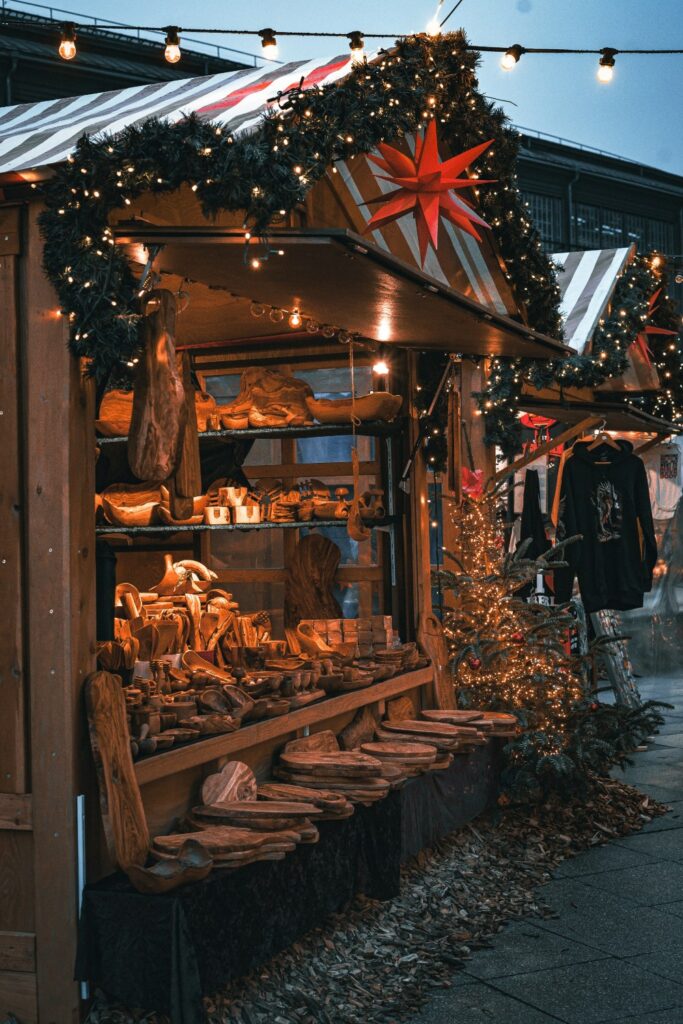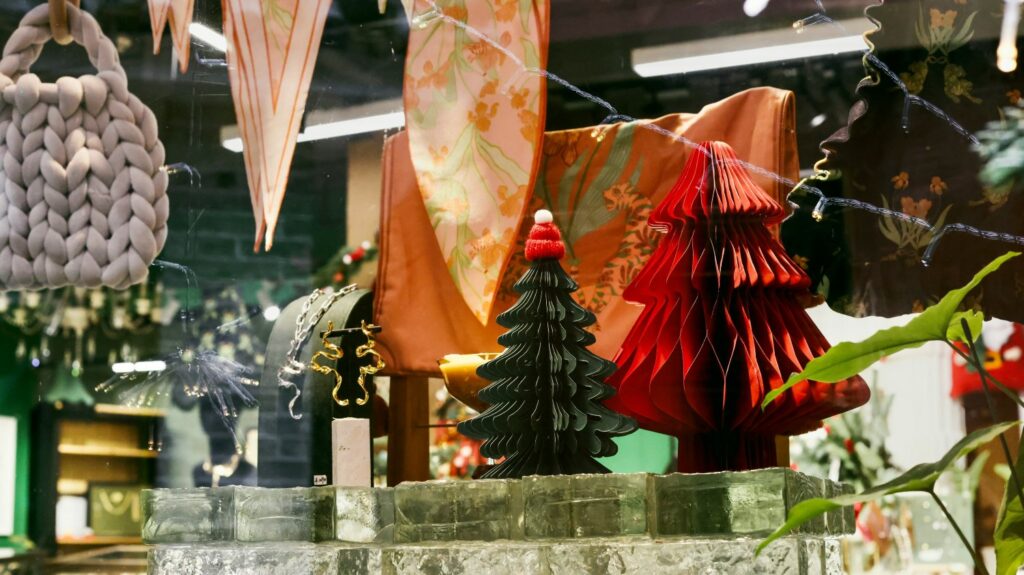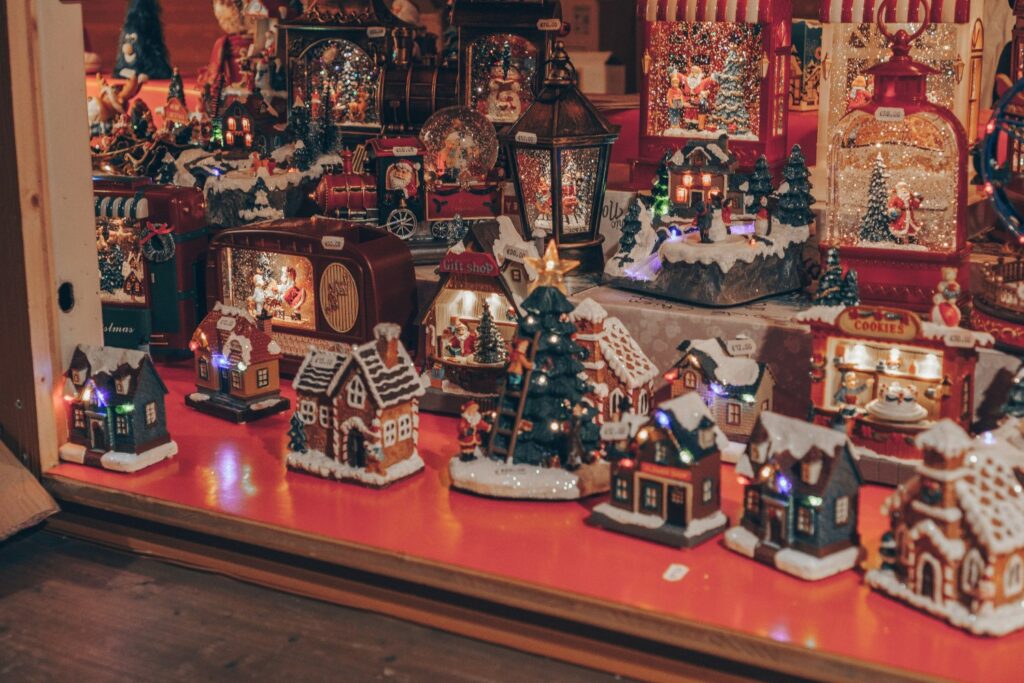Booking your spot at a Christmas markets as a stallholders has never been more competitive. Christmas event organisers will open up ballots and spots midway through the year, so ensure you have all the events you would like to attend booked so you can prepare with a goal and date in mind.
Yes it can be expensive, but Christmas is the perfect time to share your products with the world. There are many things to consider before holding a stall? At Insure Our Event, we list the most important steps stallholders need to take before exhibiting at a Christmas fair.
Decide which fairs to attend

If you’re not sure whether a fair is the right platform for your products, ask to see a list of other stallholders. You should also investigate how successful previous years have been. Ask for a rough idea of visitors and look online yourself to see how well-advertised the event was. Your stallholder fee should go towards event costs – which include marketing. You should be confident the fair will be well promoted, as this will increase the footfall to your stall.
At Insure Our Event, we spoken to clients about their experiences at fairs and exhibitions – They said the number one issue with poor customer numbers and sales was lack of marekting on behal fof the veent organiser. So do your research and ensure the Christmas event is well marketed ahead of time.
Consider your costs, too. You should aim to sell 10 times the entrance fee. Work out how much profit each of your products will make, and how much you’d have to sell to break even. Consider fuel, any overheads such as childcare costs or marketing materials, and your time. If you do the maths and work out you’d have to sell a ridiculous amount to break even – let alone make a profit – you have two choices: Either re-evaluate your prices, or look at slightly cheaper fairs to take part in.
Make your stall stand out
How you display your stall is very important. It should be immeditaly obvious from passing visitors what you sell and what your business is all about. Here’s how event stallholders can go the extra mile:
- Offer samples or testers – People are more likely to buy if they’re confident they’ll love the product.
- Brand your stall – If you’re selling vintage products, go with a vintage-themed stall. This shows you’re creative and really love what you do.
- Layer up – Add boxes and shelving to display your products on different levels. This will increase browsing time and attract people to your stall. Keep expensive products at the top, or the back, to avoid customers potentially damaging your most valuable items.
- Know your space – You might be able to use racks, shelves and rails for people to walk around instead of a standard table, but you’ll need to ask the organiser first.
- Think about lighting – Particularly in winter months, even indoor events won’t benefit from natural light coming through the windows. Add fairy lights or tea lights to add some atmosphere.
- Consider special offers – One-off discounts or a product of the day discount can encourage additional sales.
Take the right stock

A Christmas fair is the perfect platform to sell gifts or seasonal products. Think umbrellas, not sunglasses. If you can create affordable gifts that are packaged up beautifully, even better.
Everyone’s budget is different, so you should bring a range of products across a range of prices. Maybe one or two customers will splash out on your high-value range, but customers just there to browse might be tempted by a stocking filler or two.
Bring double the stock you anticipate selling. The worst-case scenario is running out of stock and missing out on potential sales. It doesn’t matter if you have to take some stock back home with you. It can’t harm to bring as much as you can on the day.
Put your customer first
Price items individually and make the labels clear and classy. Customers often don’t like having to ask for the price, so making this information available will encourage sales.
Alternatively, if you feel your products and sales would benefit from conversation and a sales pitch, then consider not advertising your prices. This forces the customer to request the price, to which you can administer your sales pitch.
Whilst it’s important not to be too pushy, you should also look available. Don’t sit reading or distracted playing on your phone. If you’re worried about being bored, maybe take some crafts with you to act as a mini-demo on your stall.
Keep customers coming back

Don’t miss the opportunity to win some valuable, loyal customers. Display business cards, and a newsletter sign-up form so those interested can sign up to hearing more from you. You could also run a prize draw to draw in customers.
Put products in a branded bag and slip a business card or leaflet in there, too. People are then more likely to remember your brand as well as just the product.
Christmas Stallholder Insurance
It’s a legal requirement to have public liability insurance. It doesn’t matter whether you’re a hobbyist or a professional crafter – if you’re holding a stall, you’ll need cover. If someone’s injured by your stall, they’ll hold you liable and you could be facing a large claim.
If an employee comes along to help with the craft fair, you’ll need employers’ liability insurance too. Should they get injured because of the work they do for you, you’ll be covered. Employees include volunteers and paid staff.
Contents and stock cover is also important for craft makers. It’ll cover your equipment and materials. So if something gets broken while exhibiting at a fair, or your stock gets damaged, you won’t lose out financially.
Complete a risk
assessment for your stall
You should conduct a thorough risk assessment in advance. Any props, shelving or banners should be sturdy. Look out for trip hazards, such as wires, roller banner, boxes or a long table cloth. Fire risk should also be considered and included in your risk assessment.
Risk assessments checklists are available from Insure Our Event, as well as documet templates for stallholders. Event orgnaisers may require a filled out risk assessment. In the event of a claim, risk assessments will be essential.
Get a quote with Insure Our Event today for a no-obligation quote. Quick, easy and affordable, Insure Our Event is the best option for stallholders and event organisers.


